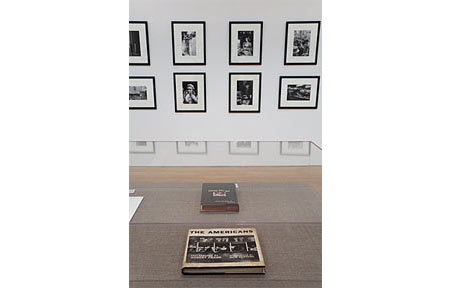
In 1955 Swiss born photographer Robert Frank received a grant from the Guggenheim Foundation to travel across America making photographs of all walks of life he encountered on his journey. Frank selected 83 out of the thousands of images he snapped to be published in his seminal book, “The Americans” published in 1958. The collection was in many ways a reaction to, or perhaps an updating of Walker Evans' book “American Photographs,” first published in 1938. Evans, working during the depression, created a sympathetic yet realistic view of the country at the time. Frank, on the other hand, chose to present the grittier side of things. Using a hand held 35mm camera, Frank's work was seen as aggressive. It challenged conventional photographic techniques. The images were out of focus, shot at odd angles, and cropped. Frank carefully orchestrated his ironic juxtapositions and thematic grouping of pictures of black and white Americans, watching parades, gawking at movie stars, eating in dinners, attending fancy benefit banquets, living and dying. While some were horrified by Frank’s informal yet dynamic representation of American culture, the series soon took on cult status, and it remains today one of the most revered bodies of photography of all time. Seeing “The Americans” presented as a suite of photographs rather than as pages in a book confirms its lasting power.
Published courtesy of ArtScene © 2009
